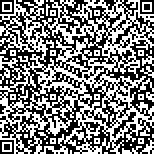下载中心
优秀审稿专家
优秀论文
相关链接
首页 > , Vol. , Issue () : -
摘要

月球底部破裂撞击坑(FFCs)的成因机制以及演化历史一直是月球科学的热点话题。FFCs的特点是底部较浅,包含放射状、同心状和/或多边形断裂,部分还包括山脊、月海物质和暗晕凹坑等火山活动相关特征,目前其主要成因存在粘性松弛和岩浆侵入两种观点的争议。论文依据具有一定穿透深度且能反映热物理特性的嫦娥二号微波辐射计数据,基于24小时亮温、规则亮温和亮温差制图,结合表面玄武岩出露情况,系统地研究月球FFCs的微波热辐射特征。主要发现包括:(1)亮温差特征表明,在FFCs中存在四通道亮温差均较高的区域且这些区域表面裂隙发育较好。(2)在表面出露玄武岩的FFCs中,玄武岩出露区域存在微波热辐射异常,表明该区域深部存在岩墙,形成表面火山特征;(3)在表面未发现玄武岩出露的FFCs中,坑底仍存在微波热辐射异常,推测在撞击坑深部存在岩墙。结果表明从微波辐射亮温角度证实了月球底部破裂撞击坑是由岩浆侵入造成的这一观点,为月球热演化历史研究提供了新的重要支撑。
The formation mechanisms and evolutionary history of lunar floor-fractured craters (FFCs) have been a hot topic of research in lunar science. FFCs are characterized by shallow, often plate-like floors and contain radial, concentric and/or polygonal fractures; additional interior features may include ridges, pits of mare material and dark-haloed pits associated with volcanic activities. Current studies of FFCs are based on visible data, gravity data, radar data, and numerical simulations based on observational data. The penetration depth of visible and infrared radiation in the lunar weathering layer is limited to a few microns. At this limited depth, the lunar weathering layer is easily contaminated by surrounding impact ejecta. The main mechanisms of formation are currently classified into two views: viscous relaxation and magmatic intrusion, and the major difference between these two mechanisms is the presence or absence of dikes in the deeper part of the impact crater. Therefore, based on the Chang’E-2 microwave radiometer (MRM ) data, which has a certain penetration depth and can reflect the thermophysical properties of the material, we selected eight representative FFCs with a diameter greater than 80 km and with center coordinates within 60 degrees north-south latitude, according to the following criteria: (1) to better display the bright temperature characteristics inside the impact crater, we selected the FFCs whose brightness temperature characteristics are less affected by the material outside the crater, i.e. there is no significant amount of basaltic material outside the crater; (2) to study the thermophysical properties of the crater, we selected FFCs whose surfaces are less affected by impact events; (3) we selected impact craters with larger diameters to represent the similar behaviors of FFCs. Meanwhile, based on the 24h brightness temperature (TB) mapping, normalized brightness temperature (nTB) mapping and brightness temperature difference (dTB) mapping methods and combined with the exposure of surface basalt, we systematically study the microwave thermal radiation characteristics of lunar FFCs. The main findings are as follows: (1) The dTB behaviors show that there are regions with high dTB values in all four channels and that the surface fractures in these regions are well-developed. (2) In the FFCs with basalt exposed on the surface, there are microwave thermal emission anomalies in the basalt exposed areas, which indicate that the dike, forming the surface volcanic features; (3) In the FFCs with no basalt exposed on the surface, there are microwave thermal emission anomalies on the bottom of the craters, which indicate that there exist the dike in the deep part of the craters. These results confirm that the lunar FFCs were caused by magma intrusion from the perspective of microwave thermal emission, and provide important new support for the study of the thermal evolution history of the Moon.

